Abdominal exercise
Table of Contents
Introduction
- Abdominal exercise improves the strength of the abdominal muscle, improves the endurance of the abdominal muscle, Helps to Supports Better Posture, and Helps to improve Balance.
- This exercise Improve Stability, and you instantly reduce your risk of muscle injuries, lower back pain, and poor posture, abdominal exercise also Helps to Protects Your Organs.
- These muscles are the muscles forming the abdominal walls, the abdomen is the part of the trunk connecting the thorax and pelvis. An abdominal wall is made of the skin, fascia, and muscle and encases the abdominal cavity and viscera.
- The abdominal muscles help to support the trunk, allow movement, hold organs in place, and are distensible (being able to accommodate dynamic changes in the volume of abdominal contents).
- The deep abdominal muscles, with the intrinsic back muscles, make up the core muscles and help keep the body stable and balanced, and help to protect your spine.
- There are main 4 muscles in the abdomen:
- External Abdominal obliques
- Internal Abdominal obliques
- Rectus abdominis
- Transversus abdominis
- Abdominal muscle exercises include two types of exercise
- Strengthening exercise
- Stretching exercise
Health benefits by doing abdominal muscle strengthening exercises.
- Helps to Supports Better Posture
- Helps to improve Balance
- It helps to Support Good Running Form “Core strengthening allows the hips, pelvis, and low back to work together more smoothly with less rocking and less excess energy expended.
- This exercise Improve Stability If you have a weak core, you instantly reduced your risk of muscle injuries, lower back pain, and poor posture.
- Helps to Protects Your Organs
- This exercise Makes your Life Easier: Like bending down to pick something off the floor, long time standing, or performing household chores. Because of that many core exercises fall under the umbrella of functional fitness: They can help you go about your day with more easiness, and seriously makes you more functional.
- This exercise may decrease or Prevent a Low Back Pain
- This exercise Boosts Your Power
- This exercise Supports Strength Training
- This exercise Helps You Age Well: It stabilizes your whole body and gives you better balance and Posture, all of which can help you to Prevent falls, prevent back pain, and it also helps to keep you mobile as you get older.
- Helps to improve spine mobility.
- abdominal exercises may help to tone your belly somewhat by defining your abdominal muscles. And once you lose the belly fat, you will likely discover that you have that six-pack hiding underneath.
- so mny people aspire to gain stronger, leaner abdominal muscles. The abdominals are the muscles around the tummy and belly button and are often called a “six-pack.” If you are interested in burning belly fat and getting a leaner midsection, here are some key factors to consider:
- Strong abdominal muscles: Focusing on exercises that develop core strength and stability can help you to develop toned abs.
- Genetics: Most people are genetically predisposed to abdominal fat. While that does not necessarily mean you will always have it, you may have to step up your workouts to get the results you are hoping to achieve.
- Belly fat: You will not be able to see your strong core muscles from the surface if there is a layer of body fat around your midsection. However, you can still have a strong abdomen and have a bit of belly fat and still be considered healthy, especially if you are exercising regularly and following a well-balanced diet.
Strengthening exercise
Transverse Abdominal Contraction
- How to do it?
- Lie down on your back with both knees bent, and your feet flat on the floor. Engage your core muscles by pulling your belly button towards your back.
- Hold for 10 seconds and relax.
- Repeat 10 times. Perform 2 times per day.

Bridging
- The patient’s position is to Lie down on your back with both knees bent. Contract your buttocks together then slowly lift your buttocks off the floor, Then keep your stomach tight and buttocks contracted. Slowly lower and come to starting position.
- you can hold the Bridging position for 5 seconds and repeat it 10 times.
- Perform 2 times per day.
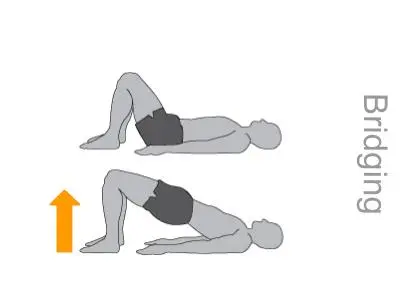
Transverse Abdominal March
- How to do it?
- The patient position is to lie down on your back with both knees bent.
- engage your abdominal muscles by bringing your belly button toward your spine. Slowly march by lifting one leg off the floor, then change to the other.
- You have to Continue pulling your belly button toward your spine during the Transverse Abdominal March exercise.
- Repeat 10 times on each side. Perform 2 times per day
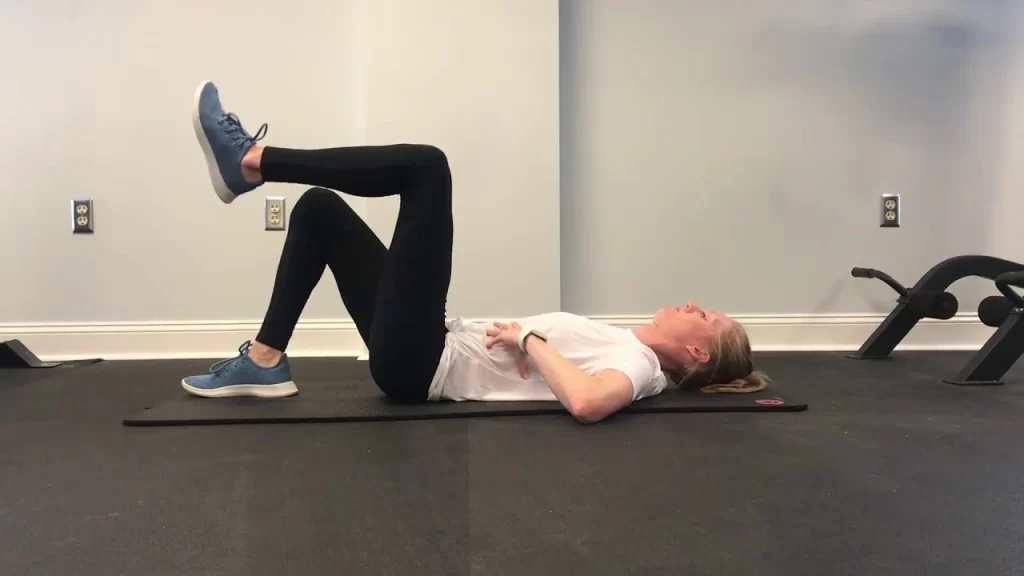
Wall Squats
- How to do it?
- The patient’s position is to Stand with your back against a wall with your feet approximately 1 to 2 feet away from the wall. and your feet are shoulder-width apart, squat approximately ½ of the way down, and make sure that your knees do not go past your toes.
- You can hold the Wall Squats position for 10 seconds and repeat it 10 times.
- Perform 2 times per day.
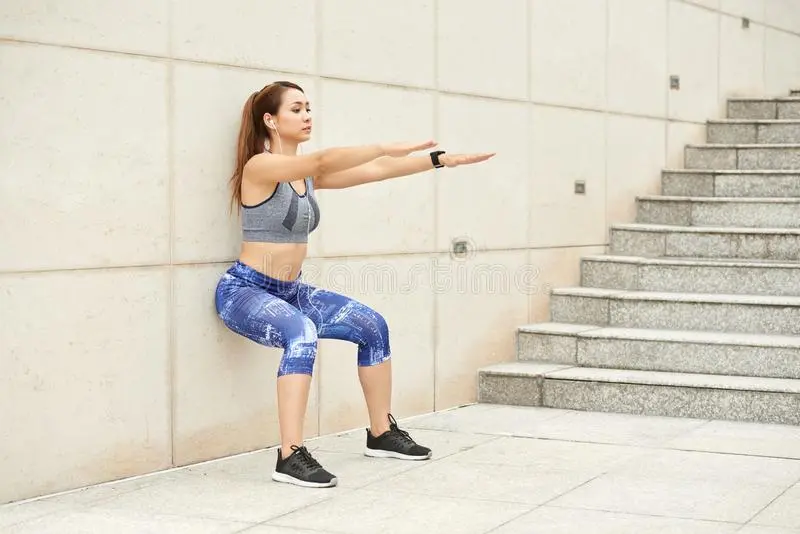
Plank
- How to do it?
- In this exercise, face down with your forearms and toes on the floor.
- Contract your abdominal muscles, drawing your belly button toward your spine
- You can hold this position for 10 seconds.
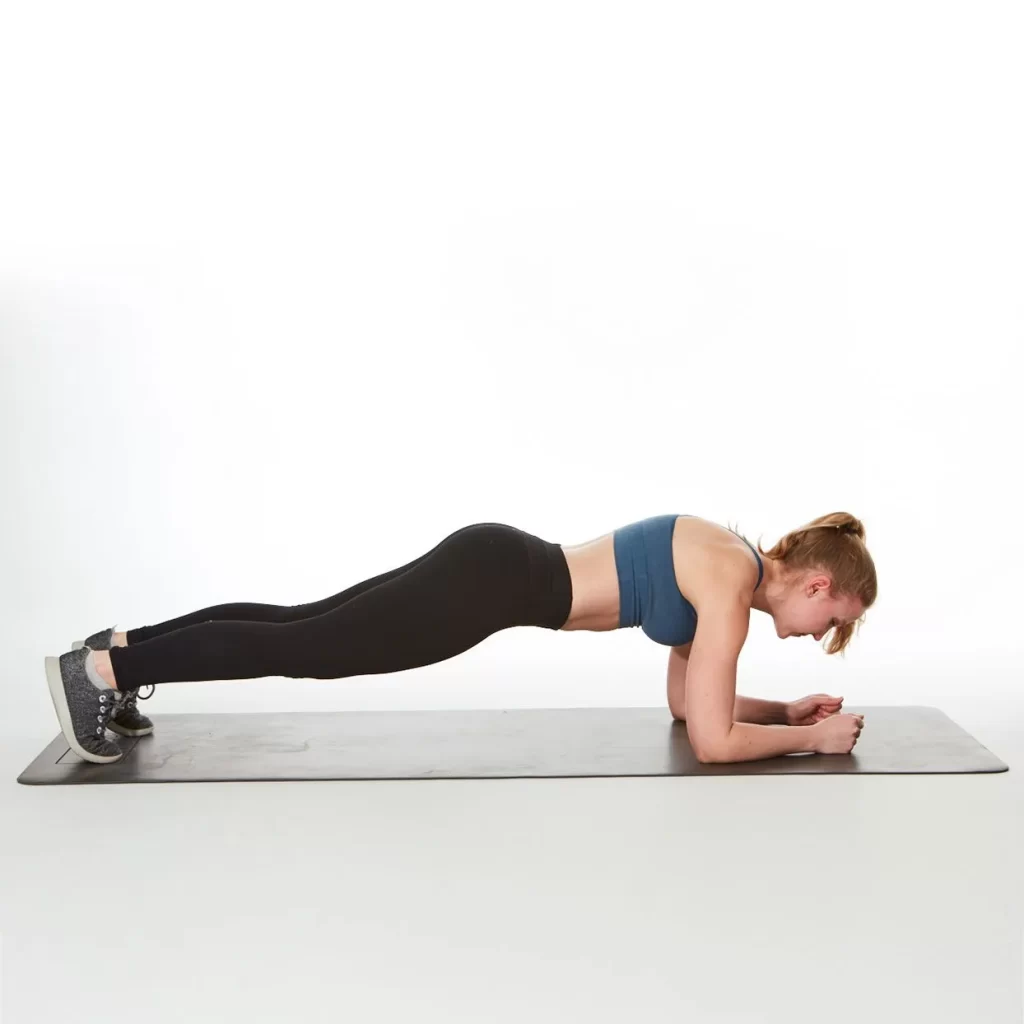
Abdominal Crunches for Your Abdominal Muscles
- How to do it?
- This is a great exercise to do and this will not place too much stress on your lower back and spine.
- For this exercise, the Position patient is to Lie on the back and flex the knees to a comfortable position Lock your hands behind your head or cross your arms in front of your chest. now Curl your head, shoulders, and upper back off the floor.
- Your lower back should be in contact with the floor; you should only rise 2 to 3 inches and exhale as you rise.
- You can hold this position for 3 to 5 seconds.
- Slowly return to the starting position. Repeat ten more times.
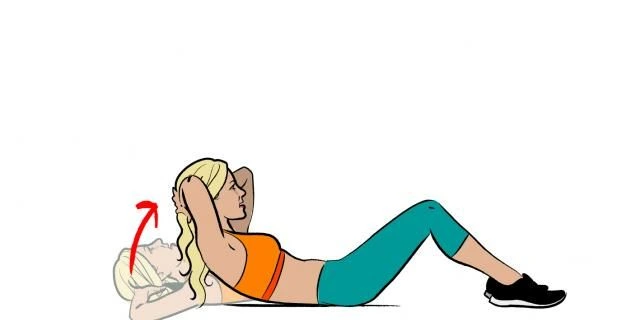
Low Ab Leg Raises
- How to do it?
- For this exercise, the Position patient is to Lie on the back and flex your knees to a comfortable position
- Then extend your legs. Contract your abdominal muscles to lift your feet from the floor in an arc-like motion
- Lift your feet about ten inches up. Then Slowly (in the same arc-like motion) return your legs/feet to the floor.
- You can Repeat ten more times for two to three sets.
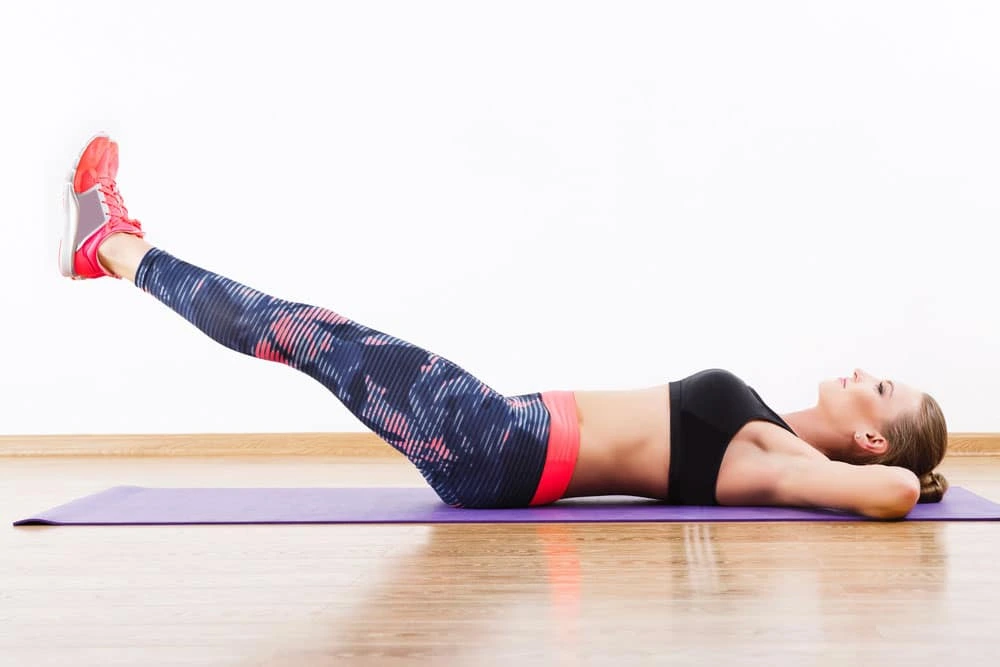
Twisting Sit-Ups
- How to do it?
- This is a very good exercise to get your obliques into action and work properly. for this exercise, the Position patient is to Lie on the back. flexed your knees to a comfortable position. Lock your hands behind your head
- Curl your head, shoulders, and upper and lower back from the floor, and angle your left elbow toward your right knee
- exhale as you lift
- Hold this position for five seconds. Slowly return to the starting position.
- Curl your head, shoulders, and upper and lower back from the floor, and angle your left elbow toward your right knee. Hold this position for five seconds.
- Again, exhale as you lift Slowly return to the starting.
- Repeat ten more times alternating your twisting movement. Keeping your abdominals working properly is a good way to stay in shape, and by regularly exercising and maintaining proper posture for your back, you may be able to stave off any attacks of pain in the back or sciatica.
- To get you started, you can not do better than these 10 exercises when focusing on the abs.
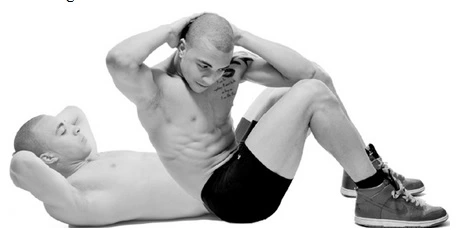
Bent over rows
- How to do it?
- You need dumbbells for this exercise that works the back and the abdominal muscle.
- now you have to Stand with your legs shoulder-width apart and knees flexed slightly. grab a dumbbell in both hands, also at shoulder-width, with your palms facing toward each other.
- Bend over at a forty-five-degree angle (no lower) and breath in.
- Pull the dumbbells straight up, toward the sides of your chest, and breathe out.
- Take the upper arms no higher than parallel with the shoulders (slightly lower than the shoulders is ok).
- During lifting, keep the wrists from moving as much as possible. Lower the dumbbells in a controlled manner to the starting position as you breathe in.
- You can Do 10 to 20 repetitions for 2 to 3 sets.
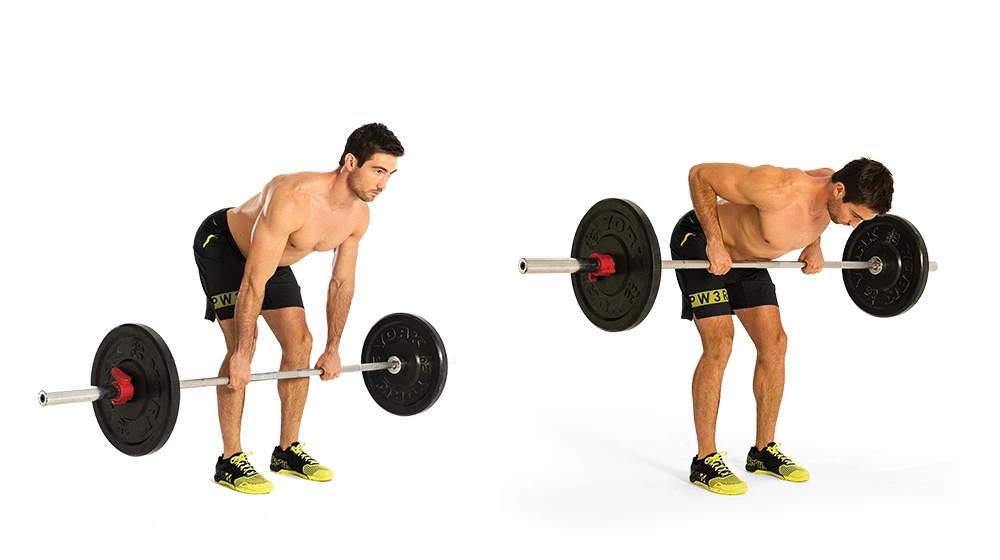
Bicycle crunch
- How to do it?
- This floor exercise is one of the great exercises to strengthen the rectus abdominis muscle.
- for this exercise, you have to be supine lying on the floor. Press your lower back into the floor and flex the knees by keeping your feet flat. Put your hands behind your head, interlacing fingers if preferred.
- elbows wide and gently cradle your head in the hands. Bring your knees up, with shins parallel to the floor, as you lift your shoulder blades off the floor. (Be careful not to strain or pull on your neck.)As you straighten your right leg out at about a 45-degree angle, turn your upper limb to the left, bringing your right elbow toward your left side knee. Return to the starting position, with both knees flexed and elbows wide.
- Repeat on the other side extend your left leg to a 45-degree angle and turn your upper body to the right, bringing your left elbow toward your left side knee. then Return to the starting position to complete one repetition.
- complete 2 to 3 sets of 15 to 20 repetitions, resting for 30 seconds to 1 minute after each set.
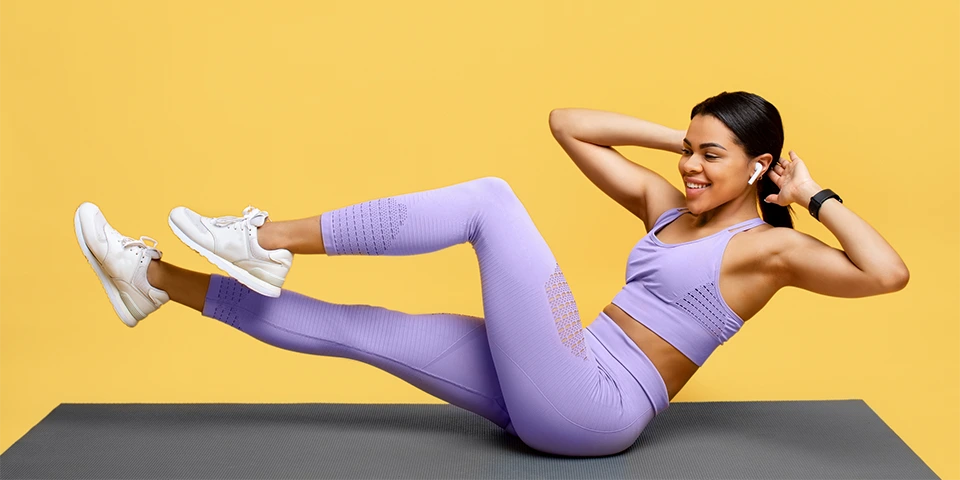
Captain’s chair/hanging leg raises
- How to do it?
- To perform a captain’s chair leg raise, you need a chair and pull-up bar for effective body weight. You have to Stand in the captain’s chair frame and put your forearms on the padded armrests. hold the handles, if available.
- Please check that your arm position is firm (stable arms enable you to raise your legs with proper form).
- keep Your back straight. Breathe in and contract your abdominal muscles to prepare for the leg raise. flexed your knees slightly and elevate your legs until your upper thighs are parallel to the ground.
- Lower your legs in a controlled movement, and breathe out as you go, until you are back in the starting position. your core muscle should be contracted.
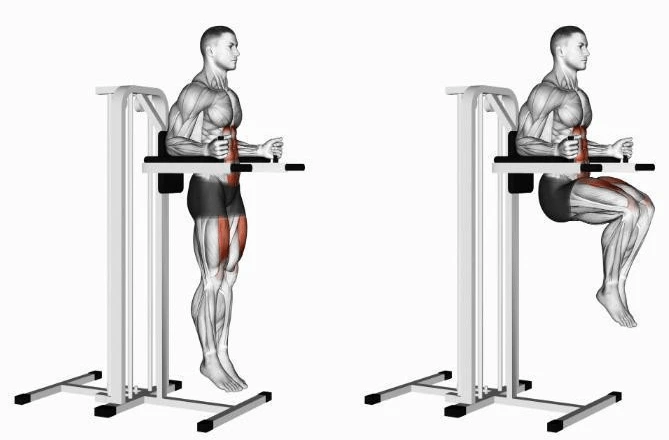
Deadlifts
- How to do it?
- For performing this exercise you need a barbell of lightweight.
- you have to stand with your feet shoulder-width apart (or not much more) with toes under the barbell.
- The feet point straight ahead or they can slightly angle out. Heels should stay flat on the surface. When you raise it, the barbell will travel close to the shins and might even graze them.
- Your head and eyes should reflect a neutral spine position neither crooked noticeably up nor down, although a slight upward tilt is not uncommon or unsafe when putting the effort in. Then stabilize the abdominal muscles by bracing them. Squatting down, bending at the knees.
- The form for descending to the bar is similar (but not identical) to the squat, with the back straight or arched slightly and not round at the shoulders or spine. hold the barbell just outside the line of both knees with an overhand or mixed grip. Then raise the barbell by pushing upward with the legs from the knees and exhale on exertion. Be careful not to elevate the hips t first so that the trunk moves forward and the back becomes rounded.
- Don’t try to haul the barbell up with your arms. The arms stay extended under the tension. during gripping the barbell as the legs push up.
- Think of the legs and shoulders moving up in unison with the hips the balancing point. They should almost graze the shins and come to rest around the level of the thigh as you reach full height. Pull the shoulders back as much as possible without bending back. Lower the barbell to the floor with a reverse motion ensuring a straight back again.
- you can repeat for your desired number of repetitions.
- This barbell exercise enlists the abdominals to stabilize your body.
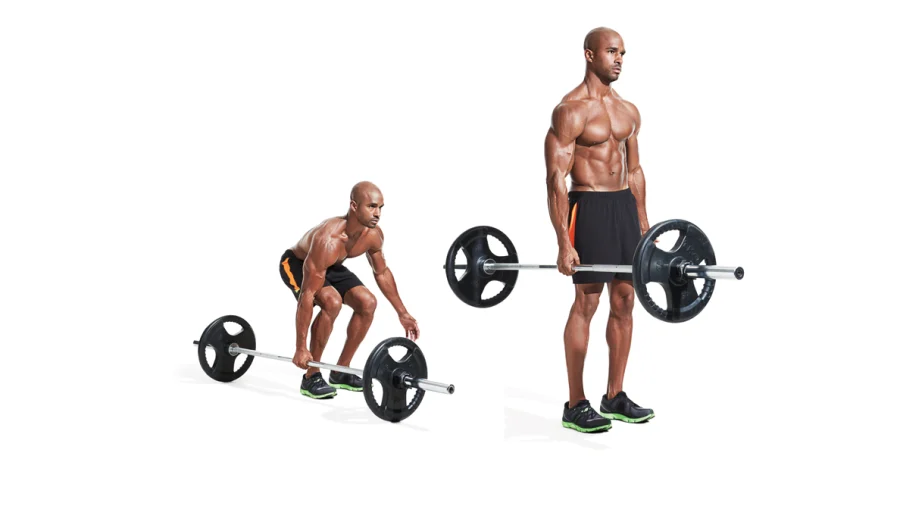
Fitness ball rollout
- How to do it?
- You can use an exercise ball for this exercise. fitness ball rollout exercise targets the rectus abdominis muscle.
- to perform this exercise you have to Kneel on the floor with a stability ball in front of you or You can use a yoga mat to kneel on for extra cushioning. The ball should be within your arm’s reach.
- Put your hands in the loose fists and place them on the ball. Your forearms will rest on the ball. Make sure your elbows are bent up to 90 degrees. You have to Keep your body in a straight line with your back flat. then Roll the ball forward with your hands as your arms and body straighten out. This motion should be slow and controlled. Keep your gaze looking straight ahead. Extend out as far as you could. Your chest will touch the ball. Hold this position for 2 to 3 seconds.
- Slowly reverse the movement by bending your elbows to roll the ball back to the initial position. Keep your core tight, so your hips do not drop.
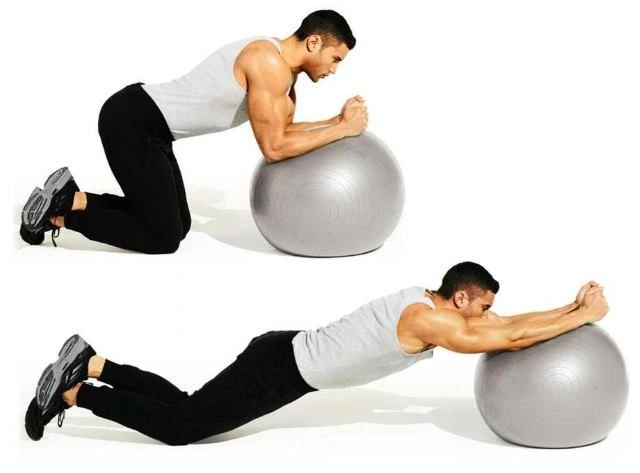
Seated cable rows
- How to do it?
- To perform the Seated cable rows exercise you have to Sit tall, and your abdominals will get a workout stabilizing your body during this exercise. you have to Sit on the bench with your knees bent and hold the cable attachment. It often has a triangle handle, but it may be the barbell. Position yourself with your knees slightly bent so that you have to reach to hold the handle with outstretched arms yet without curling your lower back over. contact the abdominals and you are ready to row. Pull the handle and weight back toward the lower abdomen while trying not to use the momentum of the row so much by moving the trunk backward with the arms. Utilize your upper and middle back by keeping your back straight and contracting your shoulder blades together as you row, and your chest out.
- Return the handle forward under tension to full stretch, and remember to keep that back straight even though flexed at the hips.
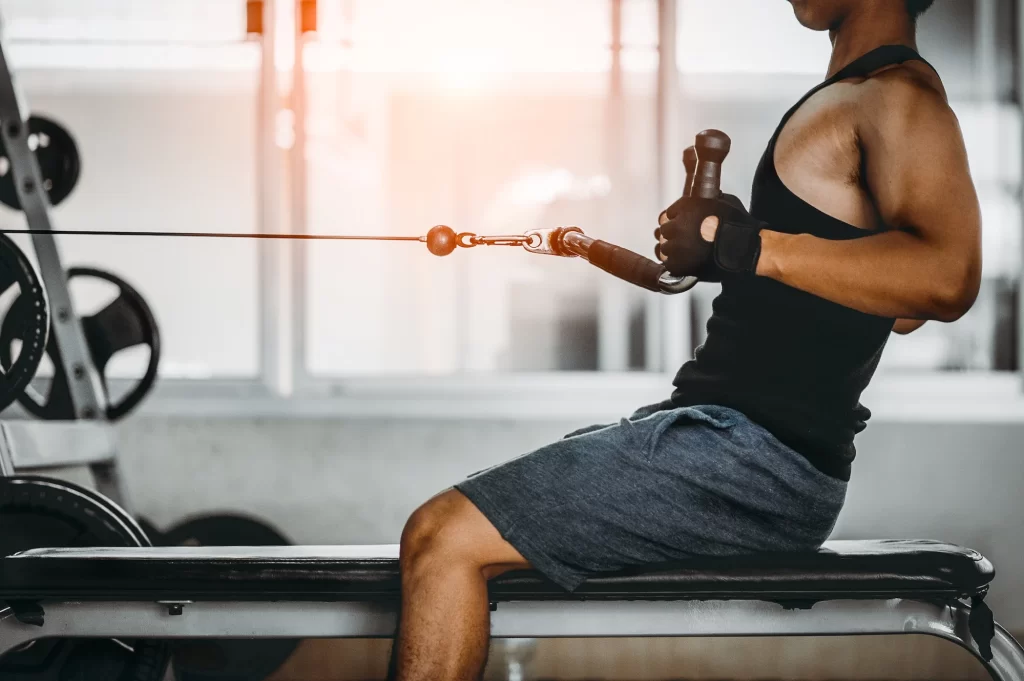
Sit-ups
- How to do it?
- You can do sit-ups the right way to keep them safe. Instead of placing the hands behind your head, cross them in front of you or slide them along the thighs to the knee. bent the knees at a forty-five-degree angle.
- for this exercise, you have to Lie on your back with bent knees and your feet anchored. then Tuck your chin into your chest to lengthen the back of your neck.
- Interlace your fingers at the base of the skull, cross your arms with your hands on opposite shoulders, or you can place your palms down alongside your body.
- Then breathe out as you lift your upper limb toward your thighs.
- Breathe in as you slowly lower yourself back down to the floor.
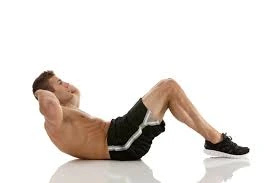
Squats
- How to do it?
- There have so many variations in squatting. You can Mix them up in your routines to challenge your body in new ways.
- for this exercise, your position is to Stand with shoulder-feet width apart and toes facing front.
- move your hips back—bent the knees and ankles and press your knees slightly open as you.
- Now flexed your knees until your thighs are parallel to the floor.
- Press into your heels and straighten your legs to return to your standing upright position.
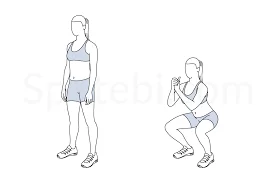
Stretching exercise
Cobra Pose
- The patient’s position is to lie face down on the floor or on an exercise mat.
- your hips flat on the floor, Then push your upper body upward while looking straight ahead. This is the stretch for the abdominal muscles.
- You can hold this pose for 15 to 20 seconds, then return to the starting position.
- Repeat 3 to 4 times.
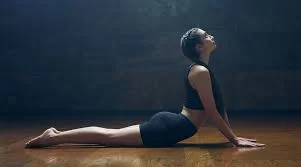
Cat-Cow
- To do Cat-Cow, follow these steps:
- You have to Come onto hands and knees in a tabletop position.
- Press into your hands and feet as you inhale to look up, allowing your tummy to fill with the air.
- Then Exhale, tucking your chin towards your chest, and arching your spine toward the ceiling.
- this movement pattern you have to continue, moving with each breath.
- Do this for 1 to 2 minutes.
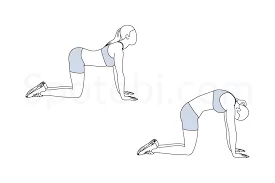
Standing ab stretch
- To Do a standing ab stretch.
- The patient’s position is to Stand tall with your feet hip-width apart. Reach your arms above your head as far out as you could.
- Then Lean back and arch your spine to open your abs and chest.
- You can hold the stretch for 20 to 30 seconds, then repeat it 2 to 4 more times.
- Make sure you do not lose your balance as you lean backward.
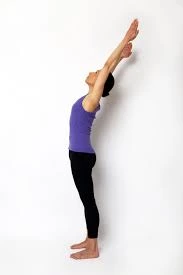
Twisting crocodile stretch
- To Do a twisting crocodile stretch.
- Lay down on an exercise mat or carpet with your back against the ground. Keep your left leg straight and bring your right leg up. Bend the knee, placing the right foot flat against the front of your left ankle. Stretch your arms out to your sides. Look to the right, then slowly twist your hips to the left.
- You can hold the stretch for 5 seconds, then repeat it 5 times on both sides.
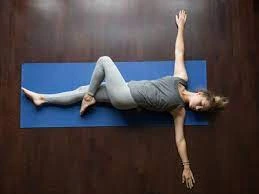
Standing oblique stretch
- Stand with both feet planted on the floor about a hip distance apart.
- Reach both arms up overhead. Hold the right wrist with the left hand and gently bend to the left side.
- Hold for 5 to 10 breaths and return to the center.
- Repeat on the right side by grabbing the left wrist with the right hand and gently leaning the right.
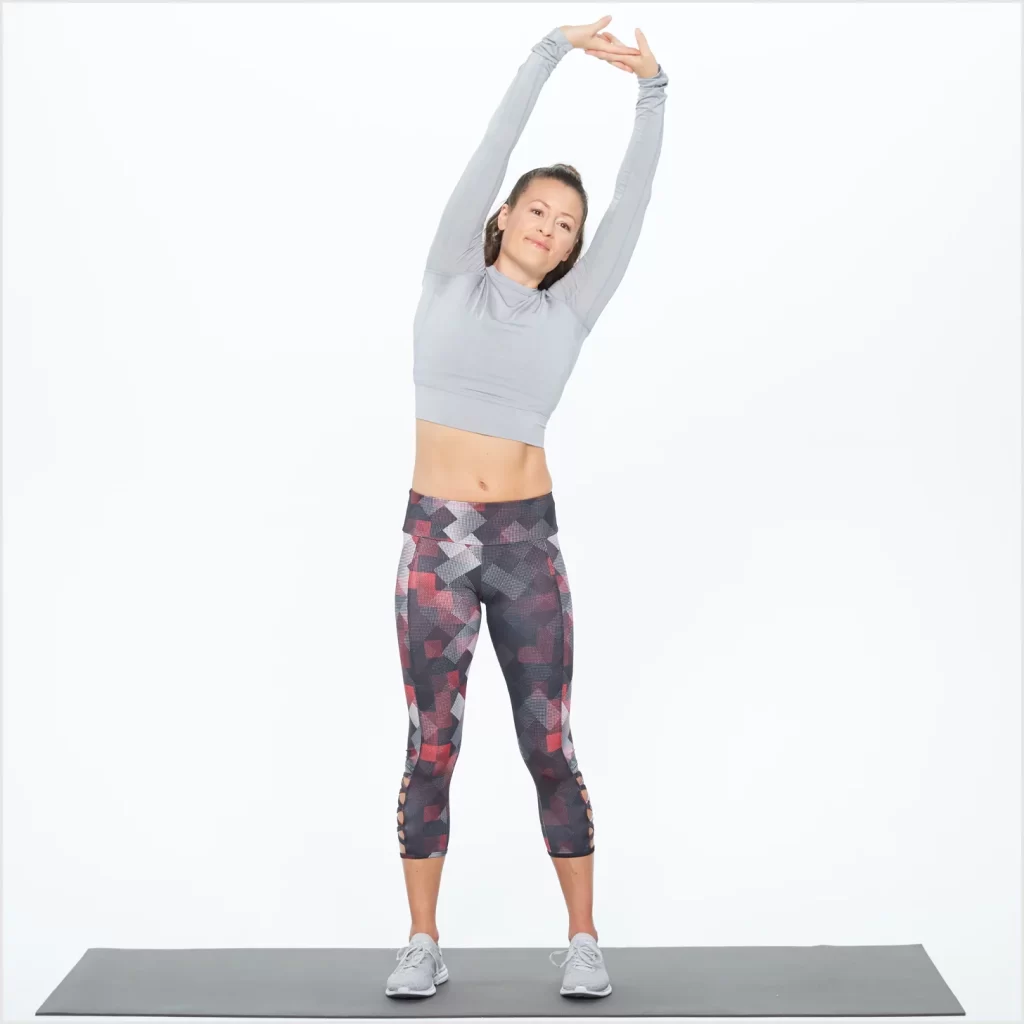
Stability ball stretch
- Use a large, stable ball to lengthen all abdomen muscles.
- Sit on a stability ball. Ensure it’s the right size by noting that the knees form a 90-degree angle as you sit.
- Walk the feet forward and lie back on a ball until the back arches over the sphere.
- Open your arms and relax the head, neck, and shoulders.
- Keep both knees bent as you lie back, or for greater intensity, stretch the legs long.
- You can hold for five or more breaths.
- Then Slowly walk back up to seated to exit the stretch.

Seated rotation
- Sit down on the chair with the spine straight.
- Then rotate the body to one side and hold the position.
- One may use the chair to help hold the position.
- You may hold the stretch for 20 to 30 seconds.
- Do not push yourself into pain.
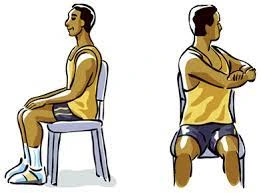
Chair Stretch
- How to do it?
- Sit down on the chair.
- Then lean your back against the chair.
- Place your hands behind your head.
- Arch all the backward.
- Make sure to push your chest and stomach area outwards.
- Hold this position for 30 seconds.
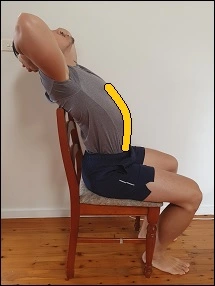
Bow Pose
- How to do it?
- Lie down on your stomach.
- Bend both knees.
- Grab both ankles with your hands.
- Use your ankles as a point of leverage to arch your torso back.
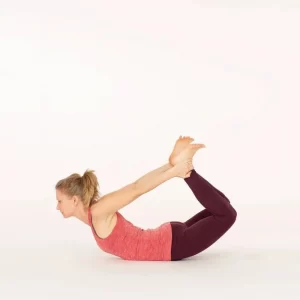
Elevated Torso
- How to do it?
- Place your forearms onto the low couch.
- Have your feet on the ground away from you.
- Allow your abdominal region to sink toward the ground.
- Arch backward.
- You can hold this position for 30 seconds.
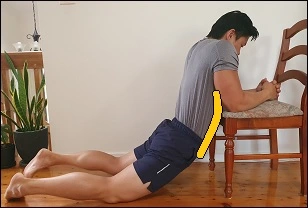
Abs Exercise Safety Precautions
- Always perform proper warm-up and cool down after doing a rigorous ab workout.
- If you are using any gym equipment, make sure to wipe off the sweat from the seats with a cloth.
- Perfect your form by watching, reading, and practicing because the wrong form may result in injury.
- Take help from a trainer if you are a beginner at abs exercises.
- When using weights for performing abs exercises, begin with light weights which are easy for you to use.
Abs Exercise Common Mistakes to Avoid
- While performing crunches, never jerk your back.
- While crunching, do not sit all the way up, instead, an angle of 45 degrees will be enough.
- Do not perform abs exercises if you have an already tense lower back.
- Do not perform the same abs exercises, again and again, instead you can prepare a diverse workout plan.
- Learn the right breathing technique during performing abs exercises.
- Do not perform abs exercises at a high speed; keep it slow and gentle.
- You can make yoga postures a part of your ab workout routine, especially the ones that specifically target your abs and lower back.
When did you not do this exercise?
- When your doctor advised you to take rest.
- If you are recently undergone any type of abdominal surgery.
- If you feel any type of pain or discomfort during these exercises.
- If you have acute back pain, you take advice from a Physiotherapist before doing any of these exercises.
Abdominal exercises at home
- Transverse Abdominal Contraction
- Bridging
- Transverse Abdominal March
- Plank
- Abdominal Crunches
- Low Ab Leg Raises
- Twisting Sit-Ups Bicycle crunch
- Sit-ups
Core strengthening exercises
- Transverse Abdominal Contraction
- Bridging
- Transverse Abdominal March
- Plank
- Abdominal Crunches
- Low Ab Leg Raises
- Twisting Sit-Ups Bicycle crunch
- Sit-ups
Core exercises
- Transverse Abdominal March
- Plank
- Abdominal Crunches
- Low Ab Leg Raises
- Twisting Sit-Ups Bicycle crunch
- Sit-ups
- Dead bug
Top 10 core exercises
- Leg raises
- Toe touches
- Dynamic plank
- Bird dog
- Reverse crunch
- Lower back extensions
- Abdominal crunches
- Heel touches (From side to side)
- Knee to elbow
- Flutter licks
Tummy toning exercises for beginners
- Ab bicycles
- Bird-dogs
- V-ups
- Toe touches
- Dynamic plank
- Plank pose
- Side plank dips
- Spiderman
- Plank swivel.
- Basic crunch
Abdominal exercises for women
- Transverse Abdominal Contraction
- Bridging
- Transverse Abdominal March
- Plank
- Abdominal Crunches
- Low Ab Leg Raises
- Twisting Sit-Ups Bicycle crunch
- Sit-ups
Core strengthening exercises for beginners
Abdominal Crunches for Your Abdominal Muscles
- This is a great exercise to do and this will not place too much stress on your lower back and spine.
- For this exercise, the Position patient is to Lie on the back and flex the knees to a comfortable position Lock your hands behind your head or cross your arms in front of your chest. now Curl your head, shoulders, and upper back off the floor.
- Your lower back should be in contact with the floor; you should only rise 2 to 3 inches and exhale as you rise.
- You can hold this position for 3 to 5 seconds.
- Slowly return to the starting position. Repeat ten more times.
FAQ
Abdominal Crunches for Your Abdominal Muscles. This is a great exercise to do and this will not place too much stress on your lower back and spine. For this exercise, the Position patient is to Lie on the back and flex the knees to a comfortable position Lock your hands behind your head or cross your arms in front of your chest. now Curl your head, shoulders, and upper back off the floor. Your lower back should be in contact with the floor; you should only rise 2 to 3 inches and exhale as you rise. You can hold this position for 3 to 5 seconds. Slowly return to the starting position. Repeat ten more times.
The first exercise is Abdominal Crunches for Your Abdominal Muscles. This is a great exercise to do and this will not place too much stress on your lower back and spine. For this exercise, the Position patient is to Lie on the back and flex the knees to a comfortable position Lock your hands behind your head or cross your arms in front of your chest. now Curl your head, shoulders, and upper back off the floor. Your lower back should be in contact with the floor; you should only rise 2 to 3 inches and exhale as you rise. You can hold this position for 3 to 5 seconds. Slowly return to the starting position. Repeat ten more times. The second exercise is Plank, In this exercise, face down with your forearms and toes on the floor. Contract your abdominal muscles, drawing your belly button toward your spine You can hold this position for 10 seconds. and third is Bridging, The patient’s position is to Lie down on her back with both knees bent. Contract your buttocks together then slowly lift your buttocks off the floor, Then keep your stomach tight and buttocks contracted. Slowly lower and come to starting position. you can hold the Bridging position for 5 seconds and repeat it 10 times.
Perform 2 times per day.
Transverse Abdominal Contraction, Bridging, Transverse Abdominal March, Plank, Abdominal Crunches, Low Ab Leg Raises, Twisting Sit-Ups Bicycle crunch
Sit-ups, pulse-ups, knee raises, and V-ups are all examples of popular and effective abdominal exercises.
The first exercise is Transverse Abdominal Contraction for this exercise Lie down on your back with both knees bent, and your feet flat on the floor. Engage your core muscles by pulling your belly button towards your back. Hold for 10 seconds and relax. Repeat 10 times. Perform 2 times per day. The second exercise is Bridging, In this exercise, The patient’s position is to Lie down on the back with both knees bent. Contract your buttocks together then slowly lift your buttocks off the floor, Then keep your stomach tight and buttocks contracted. Slowly lower and come to starting position. you can hold the Bridging position for 5 seconds and repeat it 10 times. Perform 2 times per day. The third exercise is Plank, In this exercise, face down with your forearms and toes on the floor. Contract your abdominal muscles, drawing your belly button toward your spine You can hold this position for 10 seconds. The last exercise is Abdominal Crunches for Your Abdominal Muscles. This is a great exercise to do and this will not place too much stress on your lower back and spine. For this exercise, the Position patient is to Lie on the back and flex the knees to a comfortable position Lock your hands behind your head or cross your arms in front of your chest. now Curl your head, shoulders, and upper back off the floor. Your lower back should be in contact with the floor; you should only rise 2 to 3 inches and exhale as you rise. You can hold this position for 3 to 5 seconds. Slowly return to the starting position. Repeat ten more times
Plank is the number 1 best exercise for abs. In this exercise, face down with your forearms and toes on the floor. Contract your abdominal muscles, drawing your belly button toward your spine You can hold this position for 10 seconds.



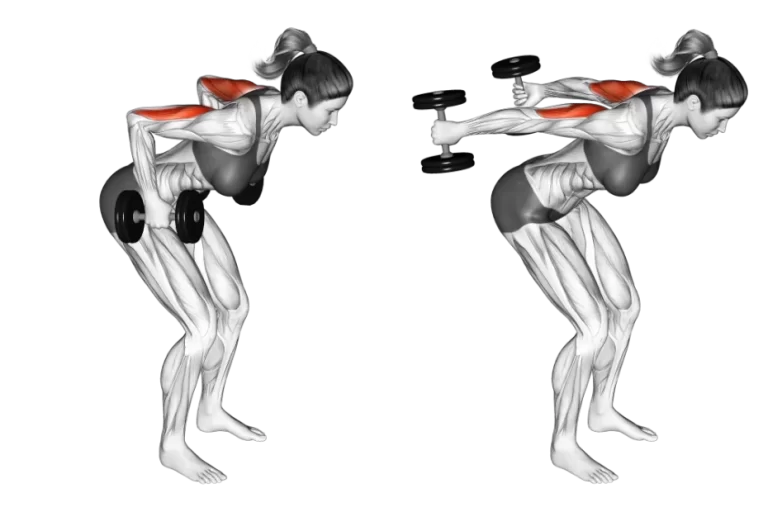
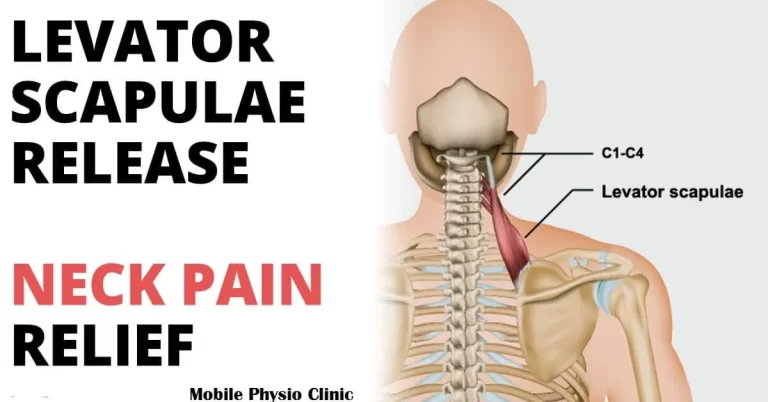
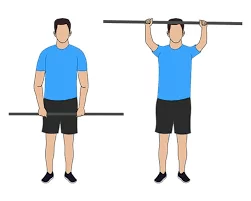

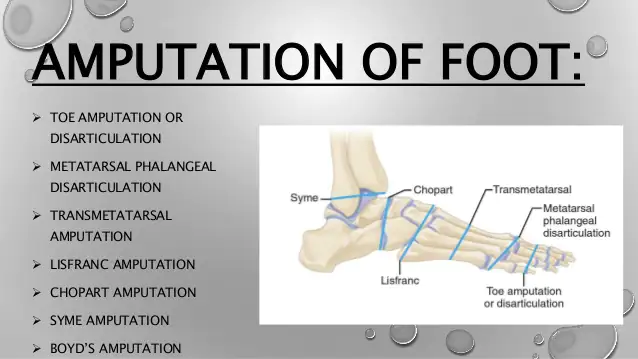
One Comment